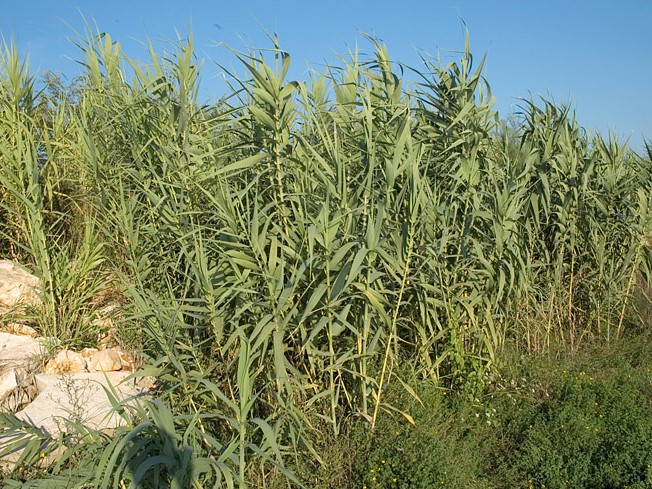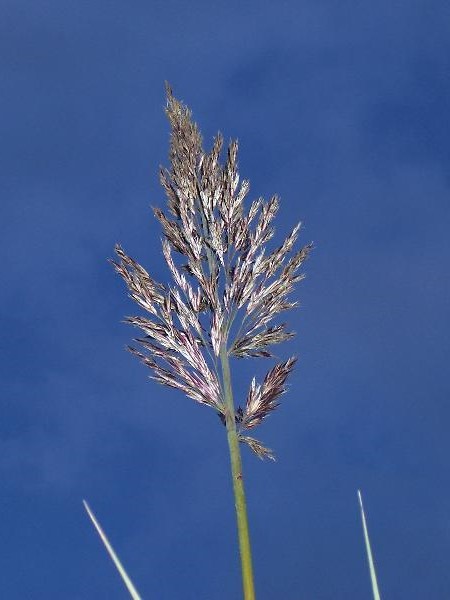
FAMILY
Poaceae, the grass family
NATIVE RANGE
East Asia (exact range unknown)
INTRODUCED RANGE
Cultivated in Asia, southern Europe, northern Africa, and the Middle East; introduced to North America from Europe for ornamental use and erosion control. It is now present across the southern half of the U.S., with significant infestations in coastal California and the Rio Grande in Texas.

Any level of paved or compacted ground >1%

Water or volcanic substrates

Low elevations (<300 meters above sea level)
Appearance
Giant reed is one of the largest grasses in the world. Sometimes confused with bamboo, it often reaches heights of 30 feet tall in coastal California. Long, thin leaves grow from nodes along the plant’s hollow stems (“culms”), which are often referred to as canes. From March to September, giant reed may produce large, plume-like flowers.
Habitat
Giant reed is hydrophyte, which means it grows best near water (including groundwater). It tolerates flooding and salty conditions. In California, it is most often found near lakes, streams, wetlands, and man-made waterways, particularly near disturbed native riparian vegetation. In the LA region, giant reed rarely invades mountain canyons, but elsewhere in the world it has been found at elevations of 8,000 feet.
Impact in California
Giant reed is considered a major threat to California’s stream habitats. Its impacts include:
- Decreasing native biodiversity and habitat quality. Giant reed is an extremely fast grower that uses more that forms deep roots and large masses of underground rhizomes. Once established, it forms dense monocultures that provide little food or habitat for native wildlife, which prefer native riparian trees like willow and cottonwood. The endangered southwestern willow flycatcher, for example, will not nest in areas dominated by giant reed. Colonies of giant reed can also alter water quality, which threatens other endangered species like the unarmored threespine stickleback and Nevin’s barberry.
- Increasing likelihood of wildfire. The fast-growing canes of giant reed are highly flammable. Large infestations could thus potentially increase the likelihood and intensity of wildfire in riparian areas. Arundo also appears to recover more quickly than native vegetation, which further decreases riparian biodiversity.
- Damage to flood control channels. Because the roots of giant reed grow so close to the soil surface, they are easily ripped out during storms. This creates debris that can jam bridges and culverts. And since these roots hold soil in place, riverbanks become destabilized – contributing to more flooding.
Management
Controlling giant reed requires regional coordination, from the top of the watershed to areas down stream. Because pieces of broken roots and rhizomes can establish new plants, giant reed can spread easily to new locations. Preventing this spread through activities such as grading and construction is thus key to containing infestations. Direct management efforts, including cane cutting and removal or herbicide treatment, require funding and support.

(Photo: Luigi Rignanese, CC BY-NC 3.0)

(Photo: David Graber, CC BY-NC-ND 3.0)
Data source:
Species records for distribution model provided by iNaturalist and Calflora
References: